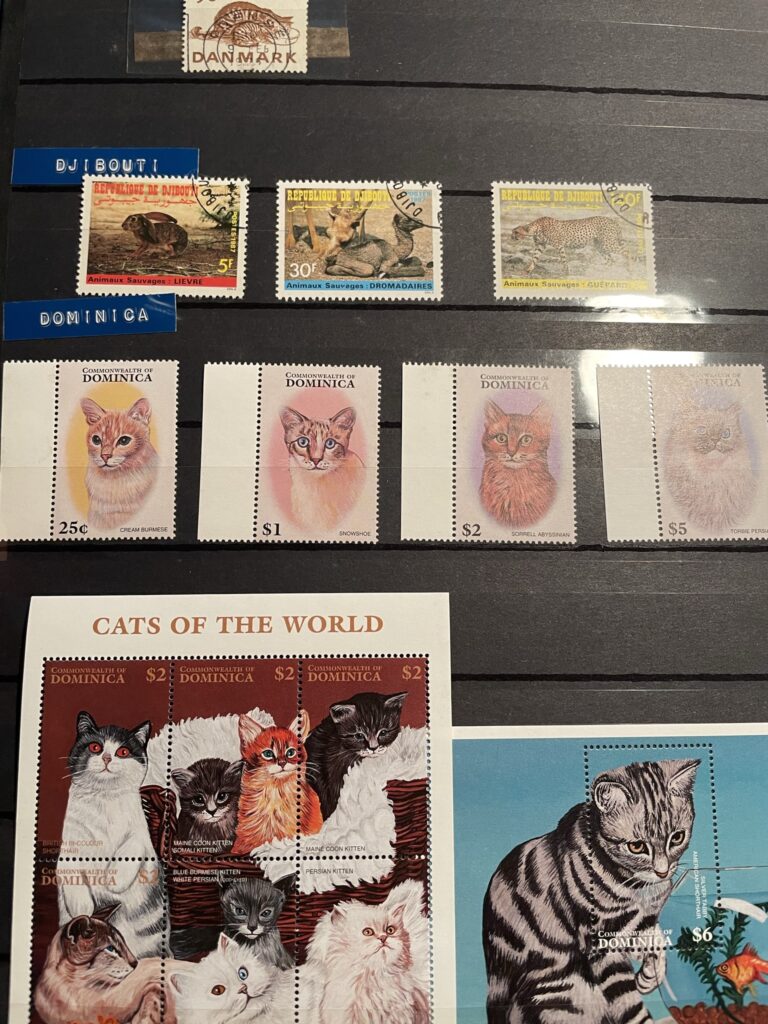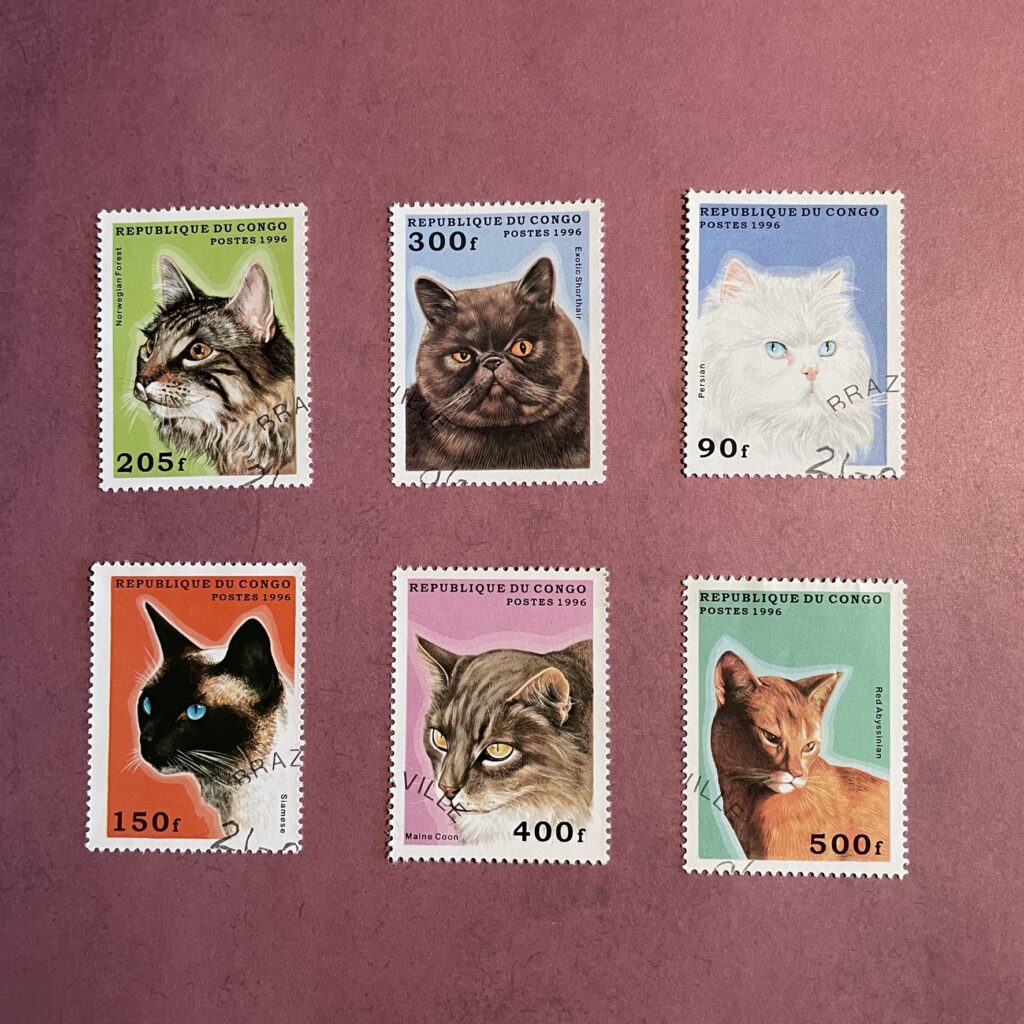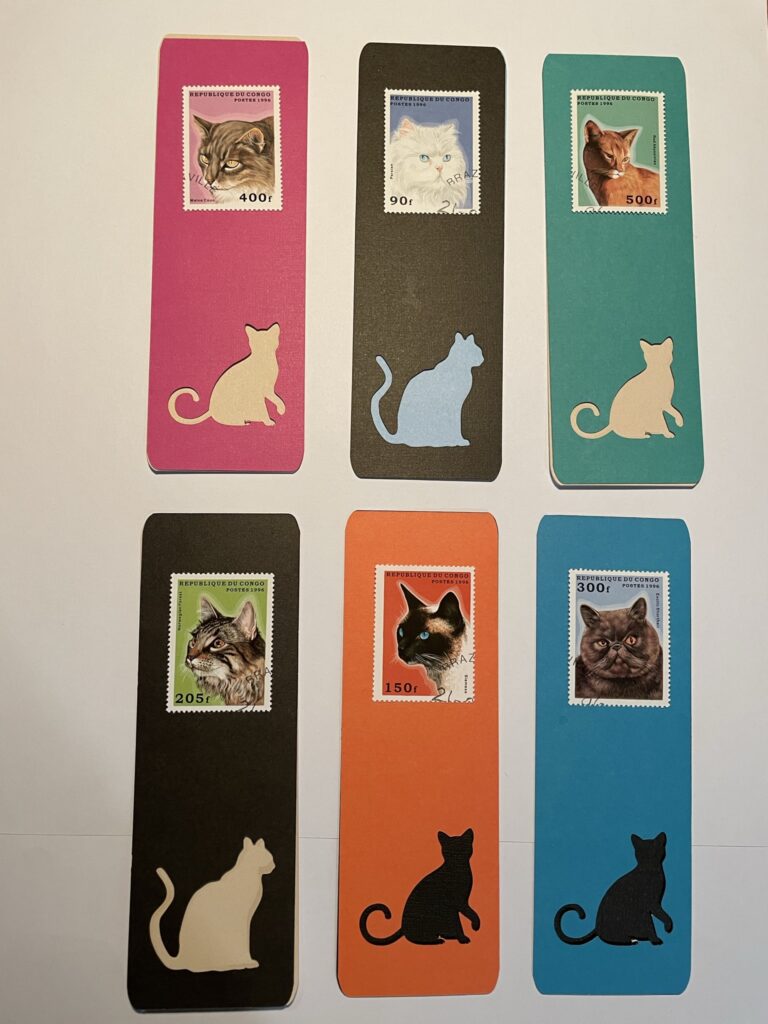How a simple task of selecting stamps took me on a philosophical quest to figure out the value of a collection
If you’ve read my story, you already know that I received my collection from a family member, Les. I started Art Postal to share the history that the collection contains by using the stamps in creative ways. When I need new stamps, I pick a binder and select the stamps that inspire me to create something new. I have been working on making bookmarks for a few months now and today I wanted to find a set of stamps to start a new series. I reached for the closest album and realized it was the one filled with stamps with cats. I sat down on the floor and looked through the pages, envelopes, and loose stamps between the pages. Then I went back and looked at all of them again.
What was supposed to be an easy task turned into an emotional journey, not quite the madeleine moment from Proust’s novel, but definitely a trip down memory lane. I thought back to the times when I would ask Les about his favorite stamps and he would inevitably bring out the cat collection. They have almost no value to anyone else. Collectors either already have them or don’t care about them since they are neither rare nor old. But for Les they were his prized possession. This got me thinking about the concept of value. How can you value a lifetime of work? I don’t mean the selling price of the collection, that is relatively easy to judge (for experts anyway, which I am not). I mean the value of the time and effort that went into it.
Les spent hours every day organizing his stamps. He had the valuable stamps right next to the common ones, because that was the order in which they were issued. He had multiples of the same issues. He didn’t really care if they were genuine or fake. As far as I know he hardly ever sold any stamps. He acquired new ones and added them to the pages of other stamps just like them, making sure that they were placed in the descending order according to quality and condition. And this binder of cat stamps from around the world, which I probably could not sell for even $20, is something that I can’t actually part with and thus is probably the most valuable item in my collection.

Then I got a bit frustrated with myself. My main goal up here looking through this album was to find something that would inspire me to make a new series of bookmarks. I can’t come down empty-handed, right? I can’t possibly be emotionally attached to every single stamp. After taking much longer than necessary, I finally selected six stamps issued in the Republic of Congo in 1996.

I came down to my office feeling quite accomplished but also a bit tired. What was supposed to take a few minutes and serve as an inspiration for my work ended up taking much longer and put me in a reflective mood. Instead of working on a new set of bookmarks, I spent the next hour just thinking about the value that we attach to items. This was a surprise to me because I don’t usually get attached to things. I don’t mind moving across the world or moving to a new house. I don’t get emotional about letting go of clothes, pictures or books when it’s time for spring cleaning. And if you really think about it, I knew Les for a relatively short time, about 15 years. But I realized that this dilemma of what to use and what not to use was not actually about me. It was about him and what this meant to him. Then a question came up, more philosophical than I had meant for it to be: how do we honor that time, work and commitment? While I am very well aware that this was a hobby, nevertheless, it was something important to him. And perhaps that is enough to make it important to me.
Through this process of working with a collection that had so much value to someone else, I am learning a lot about myself. Even though it would be a relatively easy process to sell the collection at an auction and move on, somehow I feel that using the stamps and giving them new life is the right thing to do. So after half a day of reflection, I am making a set of bookmarks featuring these stamps, and even though I know that whoever gets them will likely not have such connection to them as Les did, I hope that they appreciate a story that they tell and enjoy whatever these stamps will mean to them.

